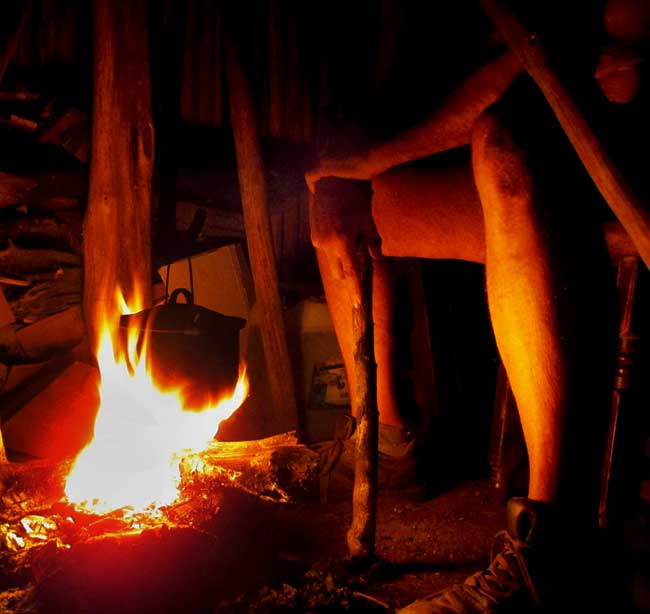
An Excerpt from Jim Conrad's
NATURALIST NEWSLETTER
January
17 2016
Issued from Hacienda Chichen Resort adjoining Chichén Itzá Ruin, Yucatán, Mexico

In 1988 when I wrote Spring Comes to the Desert Southwest -- still online at http://www.backyardnature.net/desert/ -- I quickly learned that in the desert daytime temperatures may soar, then at dusk plummet for a really cold night. Atmospheric humidity acts as a buffer against temperature extremes.
Nowadays here in the Yucatan at the beginning of the dry season it's getting to be the same. Afternoons with temperatures in the low 90s can alternate with nights when I'm glad to have a well insulated sleeping bag. And glad, when I return from my predawn jogs, for a breakfast campfire to sit by.
For, there's something transcendent about a campfire on a chilly morning. Maybe it's because as we humans evolved we were intimately involved with campfires, the fires frightening off predators, sanitizing and making edible our food, and warming us. Moreover, for millions of years campfires were the most tangible proof we humans had that we might be something different from everything around us, for only we of all the animals of savanna and forest could domesticate fire.
In fact, sometimes I think that campfires have been so important to human evolution that maybe we're genetically predisposed to feel the special sense of ease and satisfaction that I feel on these chilly mornings next to the fire. Maybe the feeling is adaptive, to encourage us to go to the trouble of making the fires.
When a well-built campfire is burning, flames all around at the fire's edge bend inward as air sweeps in to be heated and shot upward in the fire's center, toward the pot's bottom. This in-sucking process reminds me of the Maya belief that at nightfall the many forms of energy that have collected on the land during the day begin converging on the Maya hut. As people fall asleep inside the hut, the day's gathering energies surge up the hut's walls, and the roof's sloping sides focus them at the comb. At the roof's peak the energies concentrate to such an intensity that they discharge into the sky, carrying with them the spirits of sleepers inside the hut. Our dreams are our experiences in far-away places, times and dimensions, where these wandering energies scatter us.
Maybe the well-built campfire sucking in air from all around, heating it and shooting it upward inspired this beautiful concept incorporating the hut, energy and human dreaming; maybe the campfire was the subconscious model around which the dream-travel belief formed.
If the campfire is a metaphor for the Maya belief in dream-travel, then these words and the thoughts flickering in your own mind as you digest what I'm saying and filter them through your own way of seeing things -- are metaphors of same.
In fact, the campfire frame of mind can accept that everything is a metaphor for everything else, and when you reach that insight you can just keep sitting and sitting, staring into the flames.